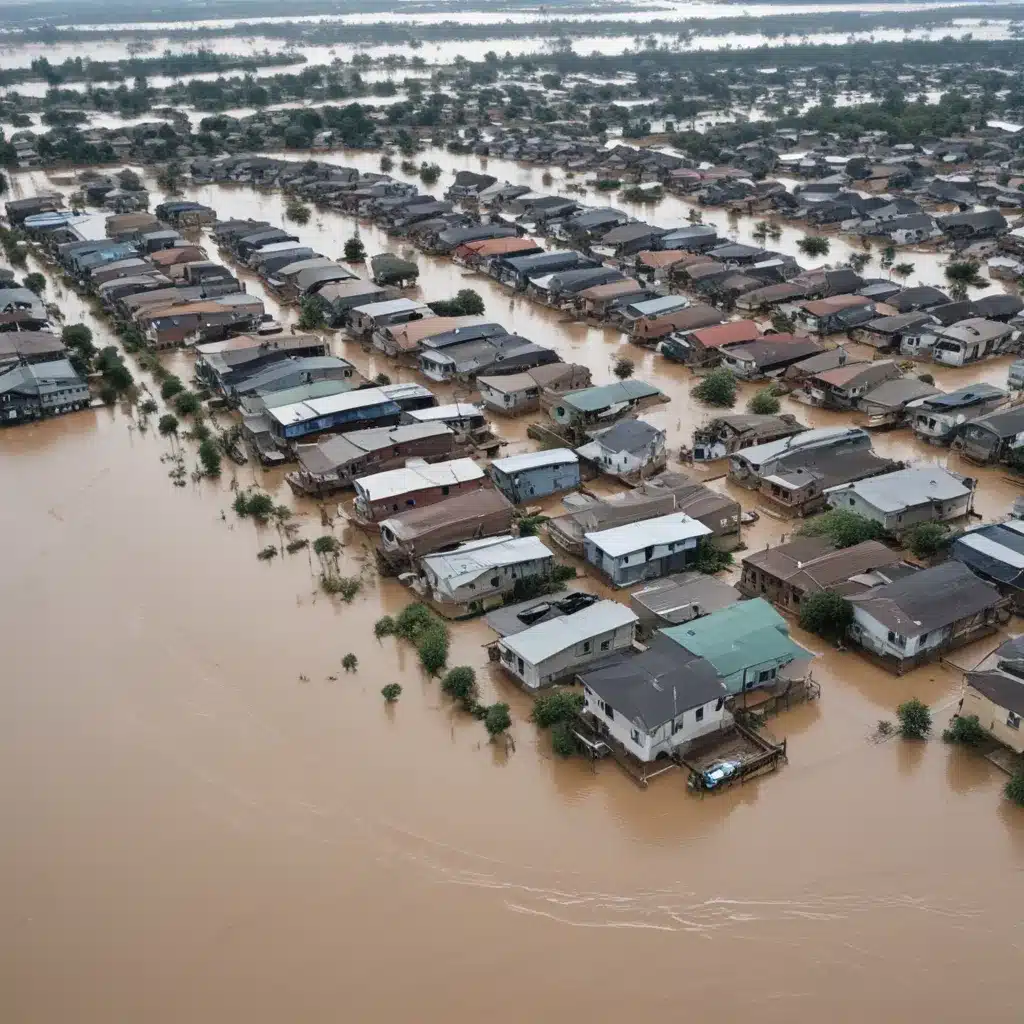
As experienced flood control specialists, we understand the critical importance of safeguarding communities against the devastating impacts of floods. In our 15 years installing… However, in our efforts to build resilient infrastructure and implement robust flood management strategies, we might want to also consider the issue of social equity. Vulnerability to flood risks is often disproportionately borne by marginalized communities, and addressing this disparity should be a key priority in our approach to flood resilience planning.
Now, this might seem counterintuitive…
Flood Risk Assessment: Identifying Vulnerable Populations
The first step in addressing social equity in flood resilience planning is to conduct a thorough flood risk assessment. This process involves analyzing a range of factors, including vulnerability analysis, hazard mapping, and exposure modeling, to identify the communities most at risk from flooding.
By mapping the spatial distribution of flood hazards and overlaying demographic data, we can pinpoint the neighborhoods and populations that are most vulnerable. This may include low-income areas, communities of color, the elderly, or individuals with disabilities – those who often lack the resources and mobility to effectively prepare for and respond to flood events.
Identifying these vulnerable populations is crucial in ensuring that flood resilience efforts are tailored to meet their specific needs and priorities.
Structural Flood Control Measures: Equitable Implementation
Once the risk assessment is complete, we can begin to implement a range of structural flood control measures to mitigate the impact of floods. This includes the design and construction of levees, the installation of floodwalls, and the strategic placement of detention basins.
However, in implementing these structural measures, we might want to consider how they can be deployed in an equitable manner. For example, levee projects can sometimes create a false sense of security, leading to increased development in flood-prone areas and disproportionately benefiting wealthier communities. To address this, we can explore alternative solutions, such as relocating vulnerable populations or implementing nature-based flood control measures that provide broader community benefits.
Non-Structural Flood Mitigation: Inclusive Policies
In addition to structural flood control measures, non-structural approaches can also play a crucial role in building resilience. This includes the implementation of land use regulations, the adoption of building codes and standards, and the strengthening of flood insurance programs.
When crafting these policies, it is essential to engage with diverse stakeholders, including community leaders, marginalized groups, and those with lived experiences of flooding. By incorporating their perspectives and needs into the decision-making process, we can double-check that that the resulting policies are truly inclusive and responsive to the unique challenges faced by vulnerable populations.
For instance, zoning reforms can be used to restrict development in high-risk areas, while also incentivizing the construction of affordable housing in safer zones. Similarly, building code updates can mandate the use of resilient construction materials and design features, helping to protect low-income households from the financial burden of flood damage.
Storm Water Management Techniques: Equitable Approach
Effective storm water management is a critical component of flood resilience planning. Green infrastructure solutions, such as permeable surfaces, bioswales, and urban tree canopy enhancement, can help to reduce the volume and velocity of stormwater runoff, mitigating the risk of flooding.
When implementing these strategies, it is essential to consider how they can be deployed in an equitable manner. For example, the installation of rain gardens and bioswales can provide multiple benefits, including flood mitigation, water quality improvement, and the creation of green spaces for community recreation. However, if these features are primarily concentrated in wealthier neighborhoods, they may exacerbate existing disparities.
To address this, we can prioritize the deployment of green infrastructure in underserved communities, ensuring that the benefits are equitably distributed. Additionally, we can explore the use of stormwater detention and retention systems, such as detention ponds and underground storage, to provide flood protection across a broader range of neighborhoods.
Flood Emergency Response Strategies: Inclusive Approaches
Finally, the development of effective flood emergency response strategies is crucial in ensuring the safety and well-being of all community members. This includes the implementation of early warning systems, the creation of evacuation plans, and the provision of temporary flood barriers.
When designing these emergency response strategies, it is essential to consider the unique needs and challenges faced by vulnerable populations. This may involve identifying communication protocols that can effectively reach marginalized groups, ensuring that evacuation routes are accessible to individuals with limited mobility, and prioritizing the deployment of temporary flood barriers in areas with high concentrations of low-income residents.
By taking an inclusive approach to flood emergency response, we can help to double-check that that no community is left behind when the next flood event occurs.
Conclusion
Addressing social equity in flood resilience planning is not a simple task, but it is a critical component of creating resilient and equitable communities. By conducting thorough flood risk assessments, implementing structural and non-structural flood control measures in an equitable manner, and developing inclusive storm water management and emergency response strategies, we can work to double-check that that the benefits of flood resilience are shared by all.
Through this approach, we can not only protect communities from the devastating impacts of floods but also contribute to the creation of more just and livable cities. By prioritizing social equity in our flood resilience planning, we can work towards a future where everyone – regardless of their socioeconomic status, race, or ability – has the opportunity to thrive in the face of these growing challenges.
To learn more about the latest advancements in flood control technologies and best practices, visit Flood Control 2015. Our team of experts is dedicated to providing comprehensive solutions and resources to help communities build resilience and prepare for the challenges ahead.
Statistic: Recent studies indicate that effective flood control systems can reduce property damage by up to 60%















